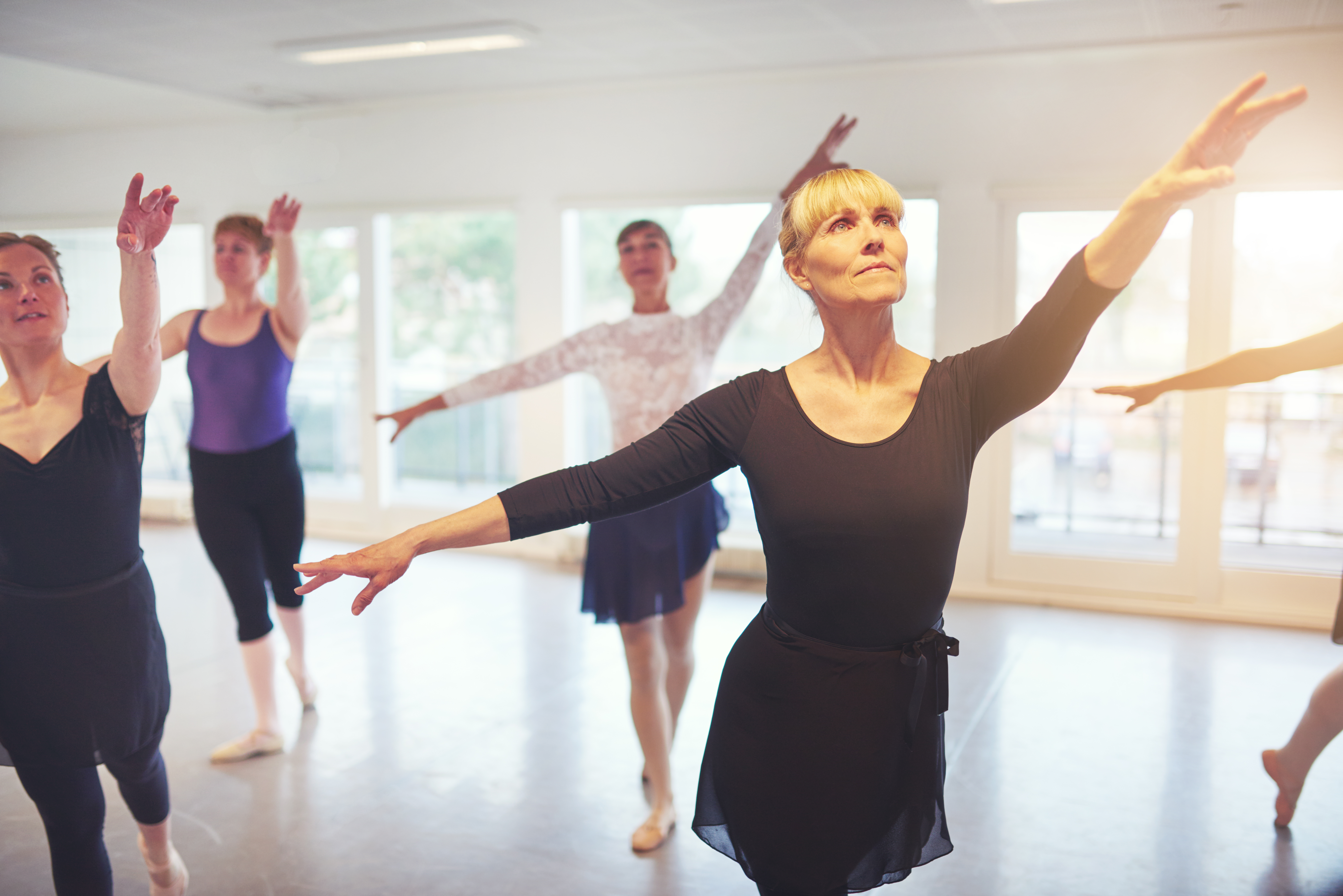Classical Ballet in Adults
Classical ballet has long been an artistic expression that combines grace, discipline and elegance. Traditionally associated with young dancers who begin their training from an early age, classical ballet has undergone a significant change in recent years by opening its doors to a new groups of adults.
Historically, ballet has been surrounded by stereotypes that suggest that it is an exclusive discipline for children and adolescents. However, more and more adults are discovering the beauty and physical and mental benefits offered by the practice of classical ballet. The idea that ballet is an activity reserved exclusively for young people is fading, giving way to a new generation of adult dancers who defy expectations.

Physical and Mental Benefits
The practice of classical ballet in adults is not only an aesthetic exercise, but also offers numerous benefits for physical and mental health. In terms of fitness, ballet works all muscle groups, improves flexibility and posture, and increases strength and endurance. In addition, the concentration required to learn the complex sequences of movements helps to keep the mind active, promoting mental agility and coordination.
A Therapeutic Art Form
For many adults, classical ballet becomes a form of therapeutic art that allows them to disconnect from daily tensions. In addition, the connection between music and movement in ballet contributes to a cathartic experience that can relieve stress and improve emotional well-being.
Community and Mutual Support
The community of adults who practice classical ballet has also grown significantly. Adult-specific classes have proliferated in dance schools around the world, creating a cozy space where dancers can share their love of art and support each other on their journey. The solidarity that develops in these classes fosters a positive environment and encourages adults to overcome any fear or insecurity they may have.
Challenges and Rewards
Although learning classical ballet as an adult can present certain challenges, such as flexibility and endurance that decrease with age, it also offers unique rewards. The emotional maturity and understanding of the body that adults bring to the practice can be translated into deeper and more expressive interpretations. The patience and perseverance necessary to learn new movements and techniques are also skills that adults tend to have more developed.
Conclusion
In conclusion, classical ballet is not exclusive to youth; it is a timeless art form that can be enjoyed at any age. Adults who venture into the world of ballet discover not only a beneficial physical activity, but also a way for artistic expression, connection with music and the construction of a passionate community. Breaking with stereotypes, adults who practice classical ballet demonstrate that grace and elegance have no age limits.
Share this content






